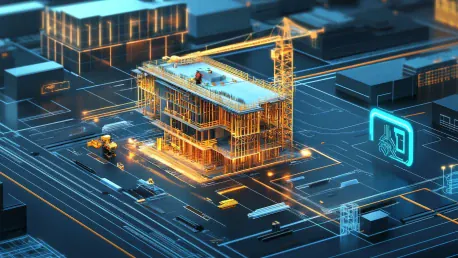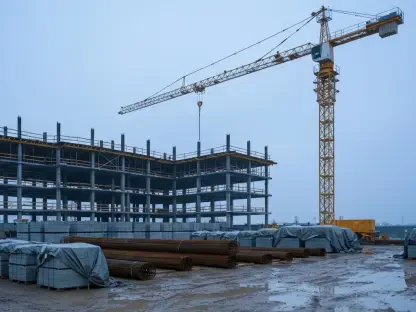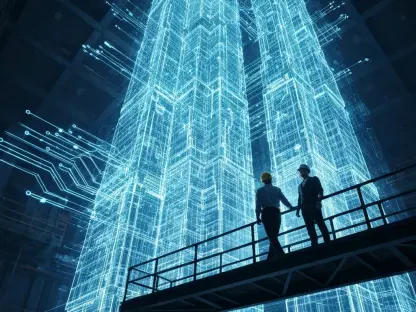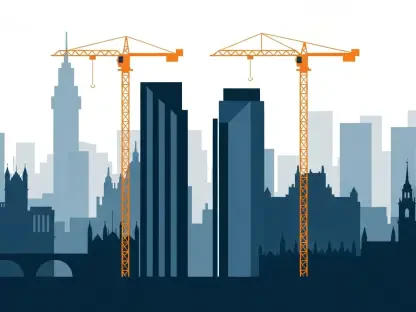Building Information Modeling (BIM) has come a long way since its inception in the 1970s. By the early 2000s, BIM had revolutionized the construction industry, becoming an essential tool for planning, designing, constructing, and managing building and infrastructure projects. The digitalization of these processes allows stakeholders to visualize every stage of a project’s lifecycle before physical implementation, improving scheduling, resource allocation, and risk mitigation. This ensures that projects are completed on time and within budget. Recent advancements integrating Artificial Intelligence (AI) with BIM are set to introduce a new era of innovation and efficiency within the construction sector.
The Evolution of BIM in the Construction Industry
BIM has evolved significantly over the decades, transforming from a niche technology into a cornerstone of modern construction practices. Initially, BIM was primarily used for creating digital representations of the physical and functional characteristics of buildings. However, as technology advanced, so did the capabilities of BIM. By the early 2000s, BIM had become a comprehensive process and digital platform that facilitated the entire lifecycle of construction projects.
The integration of BIM into construction processes has led to numerous benefits, including improved collaboration among stakeholders, enhanced visualization of project stages, and better management of resources. These advantages have made BIM an indispensable tool for ensuring that projects are completed on time and within budget. As the construction industry continues to embrace digitalization, the role of BIM is expected to grow even further, paving the way for more efficient and sustainable building practices.
Despite its impressive trajectory, the evolution of BIM is far from over. As new technologies continue to emerge, BIM is likely to integrate even more advanced features, such as AI and Internet of Things (IoT) capabilities. These advancements promise to further streamline construction processes, offering even greater precision and efficiency. The ongoing development of BIM underscores the importance of staying current with technological trends, as continued innovation will likely transform the industry at an accelerated pace.
AI Integration: Enhancing BIM Capabilities
The introduction of AI into BIM heralds significant improvements in various areas, including clash detection, energy simulation, quality control, cost estimation, and schedule optimization. AI algorithms analyze 3D models to detect design conflicts or clashes, enabling pre-construction issues to be identified and resolved, thus preventing costly on-site corrections. This capability is particularly valuable in complex projects where multiple systems and components must be integrated seamlessly.
AI also assists in simulating a building’s energy performance. By analyzing design factors and building orientation, AI can predict how heating, ventilation, and air conditioning (HVAC) systems will perform, leading to energy-efficient solutions that reduce operational costs. Additionally, AI-driven sensors and data analytics can identify potential on-site issues before they escalate, ensuring higher construction quality and reducing the likelihood of defects.
Traditional BIM simplifies cost estimation, but AI enhances accuracy by analyzing various data points—including project dimensions, material requirements, and labor costs—to generate precise estimates. This precision helps avoid the pitfalls of underbidding and overbidding. Furthermore, AI’s ability to analyze site layouts and equipment availability leads to the creation of highly realistic project schedules that align with client expectations, improving overall project management efficiency.
One of the most exciting prospects of combining AI with BIM is the potential for predictive analytics. By leveraging historical data and machine learning algorithms, AI can anticipate potential project delays, budget overruns, or resource shortfalls before they occur. This predictive capability enables proactive decision-making, allowing project managers to mitigate risks and adapt strategies in real-time. The synergy between AI and BIM is transforming how construction projects are planned and executed, setting new standards for efficiency and accuracy in the industry.
AI and Augmented Reality: A Promising Synergy
Another promising advancement is the integration of AI-enhanced BIM with Augmented Reality (AR). This combination allows for immersive visualization of the final product, surpassing traditional blueprints or digital models. Clients can virtually walk through a building before construction begins, providing a tangible understanding of the finished project. This immersive experience is crucial for securing client approval and ensuring satisfaction.
The synergy between AI and AR technologies offers numerous benefits beyond client engagement. For instance, construction teams can use AR to overlay digital models onto physical spaces, facilitating real-time comparisons and adjustments. This capability enhances accuracy and reduces the likelihood of errors during construction. Additionally, AR can be used for training purposes, allowing workers to familiarize themselves with complex projects in a virtual environment before stepping onto the actual site.
In addition to improving client engagement and team collaboration, the integration of AI and AR can significantly enhance safety on construction sites. By providing real-time data and visual cues, AR can alert workers to potential hazards and guide them through safe procedures. AI can further analyze data from these AR interactions to identify patterns and risks, enabling continuous improvements in safety protocols. The combination of AI and AR not only creates more efficient and accurate construction processes but also fosters safer working environments.
Challenges to AI Implementation in BIM
While the integration of AI into BIM offers numerous benefits, several challenges must be addressed for successful implementation. One of the primary obstacles is the significant cost associated with advanced AI technologies and the necessary training for personnel to effectively use these tools. Additionally, integrating AI into existing BIM systems can be complex and may require substantial changes to current workflows and processes.
Data privacy and security are also critical concerns, as AI-driven BIM applications often rely on large amounts of sensitive project data. Ensuring this data is protected against breaches and unauthorized access is paramount. Moreover, standardization across the industry is needed to ensure compatibility between different AI and BIM systems, enabling seamless collaboration among various stakeholders.
Despite these challenges, the potential benefits of AI-enhanced BIM far outweigh the obstacles. As technology continues to advance, these barriers are likely to diminish, paving the way for even greater innovation and efficiency in the construction industry. Continued investment in AI and BIM technologies, along with the development of industry-wide standards and best practices, will be crucial for overcoming these challenges and realizing the full potential of AI-integrated BIM.









